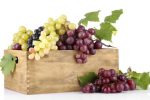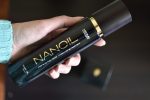Vegetarianism and cosmetics. Do they make a good match?

Hello!
There are noticeably more and more natural substances that are forcing their way through to get to the big word of beauty products. Minerals, amber, volcano dust, and among them various vegetarian substances, which are what’s now the most desired by the market. Choose the tastiest vegetarian titbits.
What does ‘cruelty free’ really mean?
The ‘cruelty free’ phrase refers to the world freed from violence. It applies to animals perceived as a source of food as well as the presence of animal-origin substances added to cosmetics. It’s typical for vegetarians to compose their menus diligently as well as analyse the lists of ingredients of beauty products, hygiene products and pharmacological products to find substances that derive from animals. What’s interesting, even makeup brushes, toothbrushes and body brushes can’t be made of animal fur.
PETA (People for the Ethical Treatment of Animals)
This is an international list of businesses that run tests on animals, along with those who don’t. The lists are updated every three months. Moreover, the lists contain the most frequently used substances of animal origins, information concerning their production, what cosmetics they can be found in and how to replace them.
Vegetarian components used in beauty products
- Proteins. Plant-based collagen occurs in the walls of plant cells like for example soy, wheat and rice. What’s interesting, there is no such thing like natural plant-based collagen – it simply doesn’t exist since the real collagen can be found only in vertebrates. From the cosmetics point of view, this substance is essential because of its anti-age action. It’s worth pointing out that humans shouldn’t make use of proteins derived from pork and cowhide. But coming back to plant-based collagen, it contains amino acids that display moisturising and smoothing properties.
- Sea collagen. It originates mostly from sea algae that is so eagerly used by many beauty product manufacturers. It must be realized that sea collagen can be also taken from fish living in seas such as shark, tuna and sole.
- Fats. They can be found in emulsions, and these are fats combined with water. Many of them are perceived as sources of active substances. Some of commonly used fats are: marmot’s fat, mink oil, ostrich oil and fish oil. They are used to manufacture medicinal or theatre makeup products. The alternative to animal-originated fat are vegetable fats. And they are: olive oil, borage oil, evening primrose oil, linseed oil and argan oil, avocado oil, apricot kernel oil, wheat germ oil, grape seed oil.
- Waxes. They are added to creams to play the role of emollients, which are substances that create so-called occlusive film on skin surface. Waxes can be found in lipsticks, mascaras and eyeshadows. The most popular waxes are: lanolin, white and yellow beeswax, insect wax. Naturally, they can be replaced with: Carnauba wax with Brazilian palm leaves, Candelilla wax, jojoba oil, sugar cane wax, fruit waxes, rice wax.
- Ceramides. They are the main building blocks of intercellular cement that binds cells in epidermis. They create lipid barrier protecting against penetration of microorganisms and other impurities. The same layer prevents water from evaporating and stops the nourishing substances from disappearing from the skin. Moreover, ceramides can also be found in our hair. They bind hair cuticles and rebuild hair structure. For beauty purposes, these are plant ceramides used that are good at penetrating skin and hair. The source of plant ceramides are: soya lecithin, sea algae, rice and sunflower grains, rosehip seeds, yeast and evening primrose, borage, jojoba, avocado and almond oils.





Leave a Reply